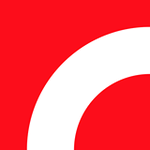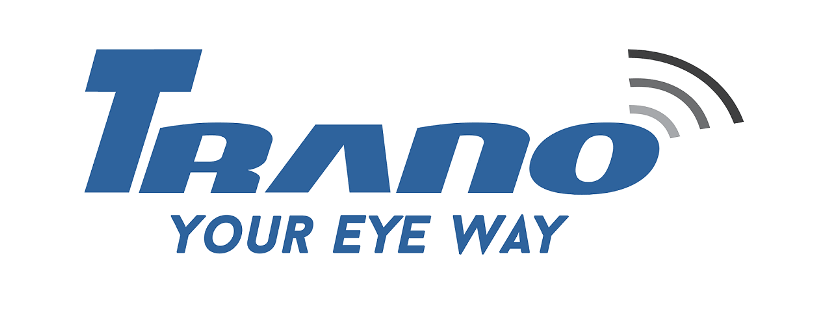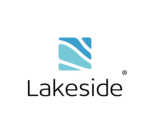Description

Oomnitza

Tragging Fixed Assets
Comprehensive Overview: Oomnitza vs Tragging Fixed Assets
Oomnitza and Tragging Fixed Assets are both solutions in the field of asset management, but they cater to different markets and have distinct functionalities. Below is an overview of each, along with comparative analyses in terms of market share, user base, and key differentiators.
Oomnitza
a) Primary Functions and Target Markets:
-
Primary Functions:
- IT Asset Management: Oomnitza provides comprehensive IT asset management, offering a single platform to manage the entire lifecycle of IT assets, from procurement and deployment to maintenance and retirement.
- Automation: Oomnitza automates workflows and integrates with existing enterprise systems to streamline IT operations.
- Reporting and Analytics: Offers robust reporting and analytics features to help organizations track asset usage, depreciation, and compliance.
- IT Security Management: Enhances security by managing asset-related risks and ensuring compliance with various security standards.
-
Target Markets:
- Oomnitza primarily targets mid-sized to large enterprises that need to manage significant numbers of IT assets across various locations.
- Industries that typically benefit from Oomnitza's offerings include technology, finance, healthcare, and other sectors where IT asset management is critical.
b) Market Share and User Base:
- Oomnitza has garnered attention for addressing the complexities of IT asset management, which traditionally could be a challenging domain due to rapid technology changes and high-value assets.
- Precise market share data might be difficult to pinpoint, but Oomnitza competes with other significant players like ServiceNow and Ivanti in IT asset management.
c) Key Differentiating Factors:
- Integration Capabilities: Oomnitza offers extensive integration possibilities with major ITSM (Information Technology Service Management) platforms and other enterprise systems.
- Holistic IT Asset Management: Unlike some competitors that might focus solely on tracking or depreciation, Oomnitza offers end-to-end asset lifecycle management.
- User-Friendliness: Praised for its intuitive interface and ease of use, which facilitates adoption and usage across various departments.
Tragging Fixed Assets
a) Primary Functions and Target Markets:
-
Primary Functions:
- Fixed Asset Tracking: Tragging specializes in tracking physical assets using technologies like RFID (Radio-Frequency Identification) and barcodes.
- Inventory Management: Ensures accurate inventory counts and assists in preventing loss or theft of physical assets.
- Asset Lifecycle Management: Manages the lifecycle of assets from acquisition to disposal with focus on physical assets.
-
Target Markets:
- Primarily targets businesses in sectors requiring robust management of physical assets such as manufacturing, healthcare, education, and logistics.
- Useful for mid-sized firms needing to track significant numbers of non-IT physical assets, especially those spread across multiple locations.
b) Market Share and User Base:
- Tragging operates in a specialized niche focused on RFID technology, offering solutions to organizations that rely heavily on physical inventory and logistics management.
- The user base mainly consists of organizations that prioritize accurate tracking and management of physical assets critical to their operations.
c) Key Differentiating Factors:
- RFID Technology: Specializes in using RFID for asset tracking, which is a significant differentiator from competitors that may use alternative tracking technologies.
- Focus on Physical Assets: Unlike Oomnitza, which is IT-focused, Tragging is centered on the tracking and management of physical assets.
- Industry-Specific Solutions: Offers tailored solutions that cater to the unique needs of industries where physical asset management is paramount.
Comparative Analysis
- Functionality and Market Focus: Oomnitza focuses on IT assets and the technology lifecycle, while Tragging is concentrated on the tracking and management of physical assets using RFID.
- Technology Utilization: Oomnitza leverages software and integrations, while Tragging emphasizes RFID and barcode technology.
- Market Share and User Base: Oomnitza targets larger enterprises with complex IT asset networks, whereas Tragging caters to industries heavily reliant on physical assets and inventory management.
Both Oomnitza and Tragging offer valuable asset management solutions, yet serve significantly different needs and markets. Understanding these differences is crucial for organizations seeking effective asset management tools relevant to their operational environments.
Contact Info

Year founded :
2012
+1 866-985-0557
Not Available
United States
http://www.linkedin.com/company/oomnitza

Year founded :
Not Available
Not Available
Not Available
Not Available
Not Available
Feature Similarity Breakdown: Oomnitza, Tragging Fixed Assets
When comparing two asset management platforms like Oomnitza and Tragging Fixed Assets, it's important to examine their core functionalities, user interfaces, and any unique features that distinguish one from the other. While I don't have access to the exact side-by-side feature lists for these specific products, based on common asset management system functionalities, we can infer the following:
a) Core Features in Common
-
Asset Tracking: Both platforms likely offer robust asset tracking capabilities, allowing organizations to keep an accurate inventory of their physical assets, such as IT equipment, machinery, and office supplies.
-
Inventory Management: They likely provide inventory management features to track asset quantities, locations, and statuses.
-
Lifecycle Management: Management of the entire lifecycle of an asset, from acquisition to disposal, is usually a core feature in these types of platforms.
-
Reporting and Analytics: Both solutions might offer reporting tools to generate insights into asset utilization, maintenance schedules, and financial assessments related to asset depreciation and value.
-
Compliance and Audit: Features to ensure that asset management complies with industry standards and that there is an audit trail for asset transactions and changes.
-
Integration Capabilities: Integration with other enterprise systems such as ERP, finance, and IT service management tools is a typical requirement.
b) User Interface Comparison
-
Oomnitza is often praised for its user-friendly interface, which features a modern design, intuitive navigation, and dashboard customization options to help users quickly access vital information and manage assets efficiently.
-
Tragging Fixed Assets might have a more straightforward, possibly utilitarian interface, possibly focusing more on operational simplicity rather than aesthetic details. It could prioritize efficiency and functionality over complex navigational structures.
Both platforms should offer web-based interfaces with accessibility across devices, though the specific design philosophies and user experiences can vary depending on their target markets and user feedback.
c) Unique Features
-
Oomnitza:
- Integration Focus: Known for its extensive integration capabilities, Oomnitza can connect with a wide range of IT and business management systems, making it suitable for organizations with complex tech stacks.
- Automation and Workflow Tools: Oomnitza might offer sophisticated automation features that allow users to create workflows for repetitive tasks such as onboarding and offboarding employees, asset audits, etc.
-
Tragging Fixed Assets:
- RFID Integration: If Tragging focuses on industries like manufacturing or logistics, it might include native support for RFID or other automatic identification technologies to streamline asset tracking.
- Specialization Features: Tragging might have special tools tailored for managing heavy equipment or specialized types of assets, particularly in industries such as construction or industrial sectors.
To summarize, while both asset management solutions share foundational features, their distinct market positioning and feature sets related to integration capabilities, user customization, and niche functionalities can set them apart. Potential users should evaluate these platforms based on their specific industry requirements, existing technology infrastructure, and operational preferences.
Features

Not Available

Not Available
Best Fit Use Cases: Oomnitza, Tragging Fixed Assets
Oomnitza and Tragging Fixed Assets are both asset management solutions but cater to different needs and scenarios based on the type of business, project requirements, and industry verticals. Here's a detailed look at the best fit use cases for each:
Oomnitza
a) For What Types of Businesses or Projects is Oomnitza the Best Choice?
-
Large Enterprises: Oomnitza is an ideal choice for large enterprises with complex and diverse technology environments. It is designed to manage a wide array of assets, including IT, hardware, software, and even non-IT assets, across multiple locations.
-
IT-Intensive Organizations: Companies with a significant investment in IT infrastructure, such as tech companies, financial institutions, and healthcare organizations, benefit from Oomnitza's robust IT asset management capabilities.
-
Centralized and Scalable Management Requirements: Businesses seeking a centralized platform that scales with growth will find Oomnitza's holistic lifecycle management features suitable for their needs. The tool provides detailed insights and reporting for decision-making and compliance.
-
Projects with Complex Ecosystems: When managing projects that involve a variety of asset types and require integration with existing IT systems and processes (e.g., HR, finance), Oomnitza's integration capabilities make it a strong candidate.
Tragging Fixed Assets
b) In What Scenarios Would Tragging Fixed Assets be the Preferred Option?
-
Small to Medium-Sized Enterprises (SMEs): Tragging is particularly well-suited for SMEs requiring streamlined asset tracking without the complexity or cost associated with enterprise-level platforms.
-
Industries with Physical Asset Management Needs: Logistics, manufacturing, and retail industries, which handle significant physical assets such as machinery, vehicles, and inventory, can benefit from Tragging's focus on fixed asset management.
-
Short-Term Asset Tracking Requirements: For projects or businesses that need expedient asset tracking solutions, especially in environments where assets frequently move or are temporary, Tragging offers simplicity and quick deployment.
-
Cost-Conscious Organizations: Companies looking to manage costs while still efficiently tracking and managing their fixed assets may prefer Tragging due to its cost-effectiveness and dedicated focus.
How these Products Cater to Different Industry Verticals or Company Sizes
-
Oomnitza provides a sophisticated platform that caters mostly to larger organizations across diverse industries like technology, finance, and healthcare. Its extensive feature set, integrations, and configurability make it particularly adaptable to IT-focused businesses or those requiring regulatory compliance and complex reporting.
-
Tragging Fixed Assets, on the other hand, serves specific niches where simplicity and ease of use are paramount. It is tailored for industries like logistics and manufacturing that prioritize physical asset tracking over integrated IT systems. Its design inherently supports SMBs with budget constraints and operational efficiency needs.
In summary, the choice between Oomnitza and Tragging Fixed Assets largely depends on the complexity, scale, and specific asset management requirements of a business. Oomnitza shines in IT and enterprise environments, whereas Tragging offers more targeted solutions for physical asset-intensive industries and cost-conscious clients.
Pricing

Pricing Not Available

Pricing Not Available
Metrics History
Metrics History
Comparing teamSize across companies
Conclusion & Final Verdict: Oomnitza vs Tragging Fixed Assets
To conclude and provide a final verdict on the comparison between Oomnitza and Tragging Fixed Assets, let's examine each of the requested aspects:
a) Best Overall Value
Oomnitza tends to offer a comprehensive suite of features with strong integration capabilities and a focus on IT asset management. It is generally suitable for larger organizations looking to streamline their asset management processes, especially if they rely heavily on other IT service management tools and seek a unified system.
Tragging Fixed Assets, on the other hand, often provides a more straightforward and potentially budget-friendly approach to asset tracking, with a focus on physical asset management, RFID technology, and inventory solutions. It may be more appealing to smaller organizations or those with very specific asset tracking needs without the requirement for complex integrations.
Verdict: Oomnitza offers the best overall value for larger and more complex organizations due to its wide range of features and integration capabilities. Tragging Fixed Assets could be considered the best value for smaller businesses or those with simpler needs, focusing more on cost-effectiveness and specific asset tracking functionalities.
b) Pros and Cons
Oomnitza Pros:
- Extensive integration capabilities with various ITSM and business applications.
- Comprehensive asset management features, including lifecycle management and reporting.
- Scalable solutions suitable for large enterprises.
Oomnitza Cons:
- Higher cost, reflecting its enterprise-grade features.
- Potentially more complex setup process due to the range of features and integrations.
Tragging Fixed Assets Pros:
- User-friendly interface focusing on ease of use for physical asset tracking.
- Lower cost, which can be attractive for smaller or budget-conscious organizations.
- Specialized in RFID and barcode scanning technology for efficient tracking.
Tragging Fixed Assets Cons:
- Limited integration options compared to Oomnitza.
- May lack advanced features required by larger and more complex organizations.
c) Recommendations
For users trying to decide between Oomnitza and Tragging Fixed Assets, consider the following recommendations:
-
Assess the Complexity of Your Needs: If your organization has a large number of IT assets and complex processes requiring integration with various other software, Oomnitza might be the preferred choice. Evaluate whether you need comprehensive lifecycle management and extensive reporting features.
-
Budget Considerations: If budget is a primary concern and your needs are more focused on straightforward asset tracking without the need for extensive integrations, Tragging Fixed Assets could be more appropriate.
-
Scalability and Growth: Consider your organization’s potential growth. If you anticipate needing more advanced features or scaling up in the future, Oomnitza’s solutions could provide the necessary flexibility.
-
Specific Technology Requirements: If RFID or barcode technology is critical for your asset tracking processes, Tragging Fixed Assets’ specialization in these technologies might be beneficial.
Ultimately, the decision between Oomnitza and Tragging Fixed Assets should be guided by your organization’s specific needs, budget, and growth plans. Conducting a thorough needs analysis will help ensure that the chosen solution aligns with your operational objectives and capacity requirements.
Add to compare
Add similar companies



